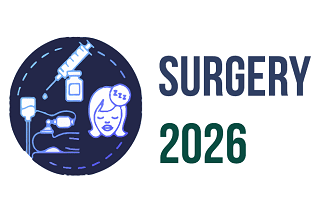4th International Conference on
Surgery and Anesthesia
November 26-27, 2026 | Dubai, UAE

Surgery 2026

Tower Health, USA
Abstract:
Introduction: Common fibular nerve (CFN) entrapment can be a significant source of pain and/or lower extremity weakness. While decompression of this nerve has been shown to improve patient symptoms, access to surgical care is often limited due to lack of surgeons with adequate training in nerve decompressions in the lower extremity. One of the main causes of insufficient training experience is lack of hands-on dissection, which can be bridged with cadaver training sessions. However, cadaver lab experiences are often limited due to high costs to training programs. Materials & Methods: At a multisystem teaching hospital, a collaboration was created between the Departments of Podiatry, Plastic Surgery, and Pathology to sequester above-the-knee amputations to provide dissection experiences for trainees prior to being incinerated. This program was provided at zero cost to trainees and held for 3 hours on a monthly basis. During these sessions, a surgeon trained in decompression of the CFN led a 2-hour, hands-on workshop for residents. Trainees completed surveys before and after the dissection of the CFN to evaluate their knowledge, interest, and comfort with CFN decompression. Results: The average participating trainees were PGY-3 residents. After a single 2-hour cadaver lab, surveys from trainees indicated significant increases in interest in learning CFN decompression and confidence with performing the procedure, although statistically significant (P >0.05). Statistically significant improvements were observed with trainees’ familiarity with anatomy of CFN and readiness to perform CFN decompression procedure independently (P
Biography:
Krish Kondisetti is a current medical student at Philadelphia College of Osteopathic Medicine. He completed his BS in Neuroscience and a minor in Chemistry at the University of Pittsburgh. He served as a chief legislative correspondent for Senator Toomey in the US Senate prior to medical school.
